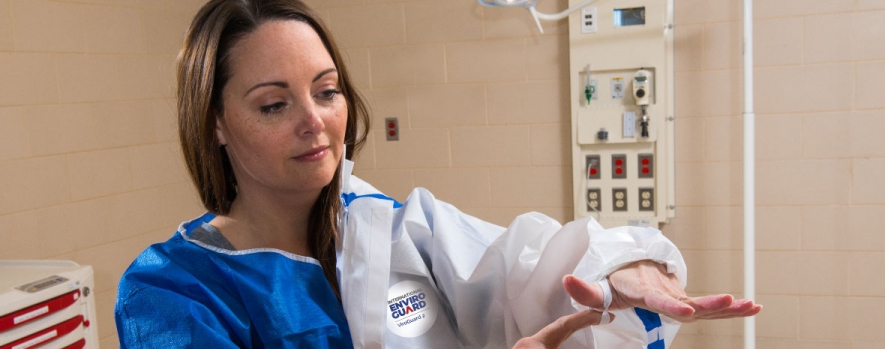
Personal protective equipment (PPE) is designed to keep workers safe in environments that pose a variety of risks to life and limb. Employers are required to not only supply PPE to workers but must also provide adequate training to employees in the proper use of PPE. This includes procedures and protocols for donning and doffing (taking on and off) protective apparel. A variety of organizations and government agencies have developed guidelines and recommendations about donning and doffing protective apparel. These are invaluable resources for employers who provide protective apparel to workers in order to train them in their effective use. Here are some examples of the kinds of procedures and protocols that should be adopted in various kinds of workplaces:
Donning and Doffing Chemical Protective Clothing: OSHA
The Occupational Safety and Health Administration (OSHA) has a set of guidelines related to “vapor protective or liquid-splash protective suit ensembles” in the OSHA Technical Manual, Section VIII, Chapter 1. It’s important to note that these are sample procedures that might need further adjustments depending on the specifics of the workplace in question and should be viewed as minimal procedural requirements. It’s important to note that the donning and doffing of a full ensemble requires a suitably attired assistant.
Donning and Doffing Infectious Disease Protective Clothing: CDC
The Ebola outbreak of 2014-2016 put the donning and doffing of infectious disease protective clothing in the spotlight for the Centers for Disease Control and Prevention (CDC). Its website offers a video-based review of its recommended protocols for Ebola: Personal Protective Equipment (PPE) Donning and Doffing Procedures. Note that this is a review and is not intended as a substitute for direct training of workers. The donning and doffing procedures for PPE when dealing with a HCID like Ebola must be done in conjunction with a trained observer who guides the worker through the donning and doffing procedures with verbal commands and a written checklist to visually confirm each step in the process. The CDC has a very informative poster presentation depicting the proper donning and doffing procedures of protective clothing for healthcare workers here. The New England Journal of Medicine also has a useful page and video covering donning and doffing protocols at Putting On and Removing Personal Protective Equipment.
Donning and Doffing Electric Power Protective Clothing: OSHA
Workers who are at risk of exposure to high voltage when working with electric power generation, transmission and distribution systems and equipment have very specific kinds of PPE to protect them. OSHA has established regulations related to the donning and doffing of protective items in these environments. A summary of these regulations with links to more detailed pages can be found at Electric Power: Donning and Doffing PPE.
Donning and Doffing Radiation Protective Clothing: DHHS
The US Department of Health and Human Services (DHHS) provides a set of guidelines around PPE for workers in situations that involve radiation emergencies. These protocols can be accessed through the Radiation Emergency Medical Management page.
Protecting EMS Responders: OSHA
Back in 2009, OSHA put together a comprehensive guidance document for how to protect first responders during treatment and transport of victims of hazardous substance releases. The document can be accessed as a downloadable PDF at Best Practices for Protecting EMS Responders.
Biosafety and PPE Use for PREDICT Activities: USAID
The US Agency for International Development (USAID) has a program called PREDICT to enable global surveillance for pathogens that could cross over from animals hosts to people. Tracking these potential emerging pandemic threats requires the proper protection of anyone involved in PREDICT activities. Guidelines for the use of PPE in these activities can be downloaded as a PDF document at Biosafety and PPE Use.
As you can see from the examples detailed above, there are a wide range of procedures and regulations from multiple sources for the donning and doffing of protective clothing and other PPE. It is critical that both employers and workers be on the same page for establishing the right procedures according to the unique needs and requirements of each workplace. If your company is looking for a reliable solution to protecting worker safety, comfort and productivity, International Enviroguard manufactures a range of high-quality disposable protective clothing for a wide range of industries. Our products provide effective protection against dust and particles, sparks or flame, chemical splashes, remediation, black water, infectious diseases, controlled environments, surface protection and more. Feel free to contact us to learn more about how our products can keep your workers safe.